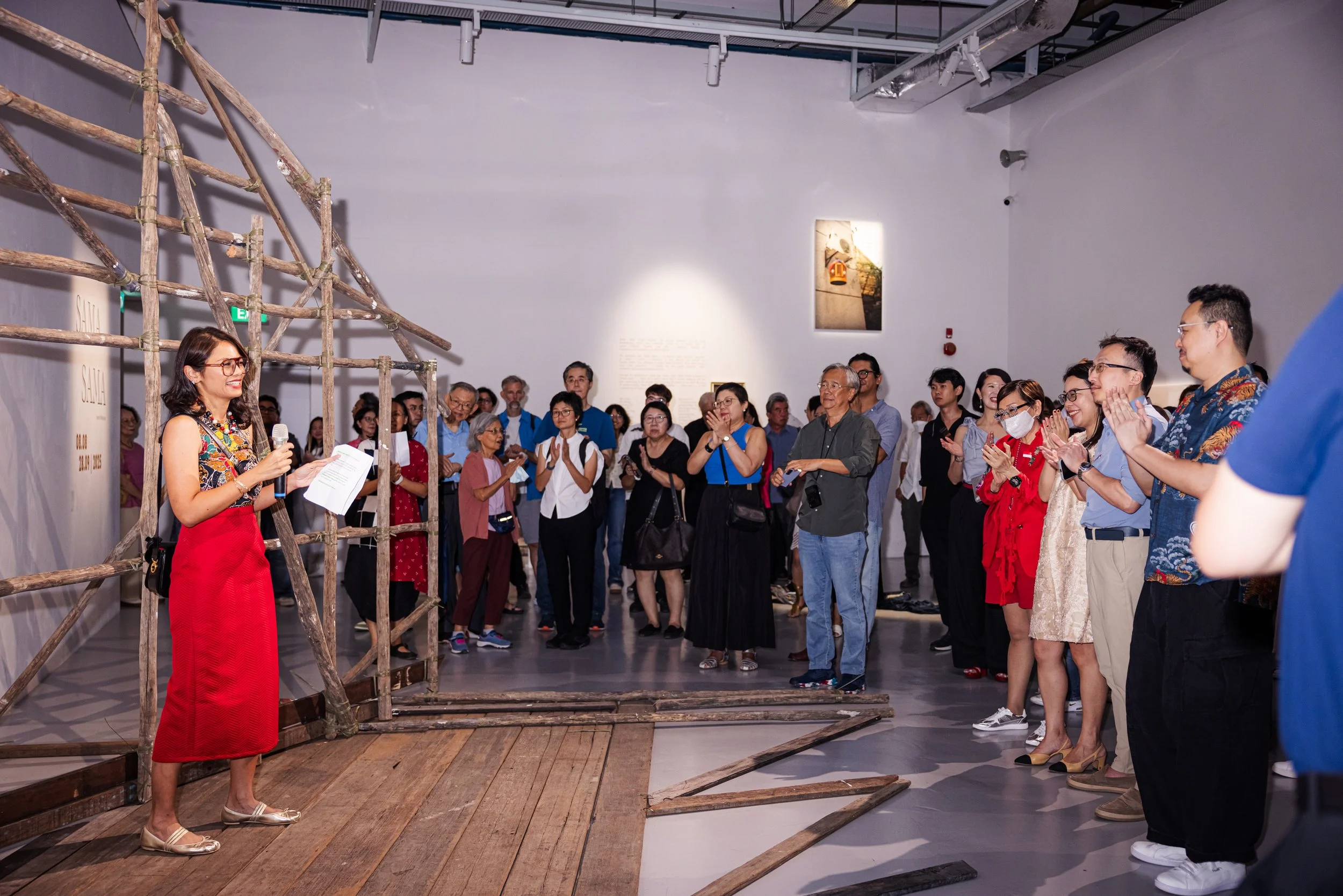8 Aug - 28 Sept 2025
Whitestone Gallery Singapore
Sama Sama brings together 60 diverse artworks by 60 local contemporary artists and collectives, united by a shared spirit of artistic solidarity. Together, they offer a collective reflection on Singapore’s evolving history and cultural identity. The exhibition title, Sama Sama—a familiar term meaning “together” or “same”—invites a rethinking of how identity and culture are formed. Rather than following a single, linear narrative, these ideas emerge from lived experience—shaped by the poetic, political, social, emotional, and aesthetic dimensions of art.
Through this gathering of voices and visions, Sama Sama creates a space for critical inquiry—where art is both a mirror and a catalyst, engaging with the past, responding to the present, and imagining the future. As we mark 60 years of nation-building, these 60 works come together—sama- sama—to tell a shared story through art.
Curatorial Note
“Sama Sama,” term familiar to many Singaporeans, carries multiple meanings—“all together,” “togetherness,” “same,” and even “you’re welcome.” By naming this exhibition Sama Sama, we invite a multidimensional engagement with contemporary art that reflects on Singapore’s evolving history and cultural landscape through the collective voices of local artists.
From its humble beginnings to its emergence as a global city-state, Singapore’s transformation has been shaped by resilience, innovation, and an unwavering pursuit of progress. At the heart of this journey lies a spirit of unity—a central theme that underpins this exhibition.
Presenting eighty works by sixty artists and collectives across generations, Sama Sama offers a diverse range of media: film, installation, drawing, painting, photography, multimedia, sound, print, sculpture, performance, socially-engaged practices, and interactive works. These pieces explore an array of urgent themes—from ecology, history, and technology to identity, politics, society, and global crises—reflecting the inclusive, multifaceted nature of Singapore’s contemporary art.
The use of the vernacular “Sama Sama” resists rigid narratives of identity and culture. Instead, it gestures toward a grounded, pluralistic understanding—one shaped through the poetic, aesthetic, political, emotional, and social dimensions of art. The exhibition serves as a collective critical inquiry, using art to question and reaffirm identity: one rooted in history, responsive to the present, and actively shaping the future.
Rather than a conventional survey of contemporary art history, Sama Sama thrives on layered interpretations, material experimentation, and meaningful connections. Each artwork carries its own narrative and historical context, created in response to the sociocultural conditions of its time. Together, these works form an artistic statement on six decades of nation-building—coming sama-sama in Sama Sama.
About curator
Wang Ruobing is an artist, educator, and independent curator whose practice and research critically explore the evolving relationship between humans and the environment, with a particular emphasis on the intersections of ecology and knowledge production. Ruobing holds a Doctor of Philosophy (DPhil) from the University of Oxford, United Kingdom. She previously served as a curator at the National Gallery Singapore and is currently a Lecturer at LASALLE | University of the Arts Singapore. She is also the co-founder of the independent art space, Comma Space.










Statement of (Extra)ordinary
Shih Yun Yeo
(Extra)ordinary
2018
Acrylic and Silkscreen Paint on Fabric 295.0 x 145.0 cm
In a profound exploration of time as a continuum of transient and unique moments, Yeo's 2018 work (Extra)ordinary "freezes" ephemeral occurrences into compelling artistic expressions. This piece, a highlight of her solo exhibition Yeo Shih Yun: Diaries, Marking Time And Other Preoccupations at the NUS Museum, emerged from her studio as an unexpected crucible of creation. Random marks on the floor and a discarded cleaning cloth became potent vestiges of artistic activity, chronicling Yeo's interaction with her studio and prompting a deeper rumination on the studio's pivotal role in art-making.
(Extra)ordinary exemplifies this serendipitous process. Originating from a studio curtain used for cleaning brushes, the cloth evolved into a canvas bearing layered imprints—from subtle grey ink to vibrant blue paint stains and silkscreen impressions. This organic accumulation, reminiscent of Helen Frankenthaler's color-field paintings, captivated Yeo with its translucent quality. By pouring ink and paint, allowing them to seep through the fabric, she transformed humble origins into a profound meditation on the passage of time, the accidental beauty of creation, and the studio as a dynamic laboratory of improvisation.

